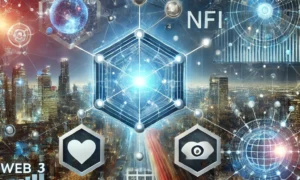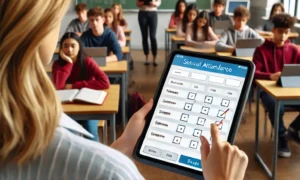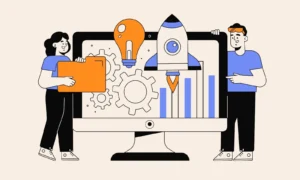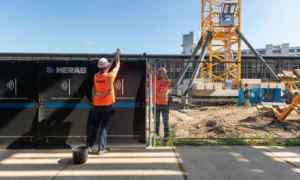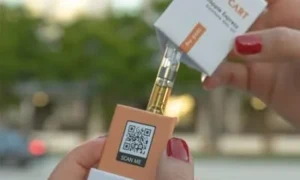In Medical facilities, staff and doctors handle many residents in a single day. Obviously this is a daunting task for both. Also, in this process residents also suffer the most. But thanks to new technology like eMAR that empower the medical facility. They don’t need to do the task manually like data entry, communication, and many other tasks. Additionally, it lessens human error and provides quality care.
What Is The eMAR?
eMAR, or Electronic Medication Administration Record, is highly useful in medical facilities due to its numerous advantages. First and foremost, eMAR improves medication safety by reducing errors in the administration process. It ensures that the right medication is given to the right resident, in the correct dose and at the appropriate time.
It is the best alternative to paper medical charts that serves as a legal documents collector for medical clinics. It creates and saves a record of every medicine administered to a resident over the treatment cycle. Additionally, eMAR software enhances efficiency by streamlining medication administration procedures, eliminating the need for manual documentation and reducing the risk of transcription errors.
Real-time documentation and integration with electronic health records provide instant access to comprehensive resident information, aiding healthcare providers in making informed decisions. Overall, eMAR improves resident safety, increases efficiency, and contributes to better healthcare outcomes in medical facilities.
Advantage of the Implementing eMAR Software
Implementing Electronic Medication Administration Record (eMAR) software in hospitals offers several advantages. Here are some key benefits:
1. Improved Medication Safety
In the medical field, medication mistakes threaten someone’s life. Manually data entry is always the prone area of the errors and is actually scary to lose your loved one. eMAR software enhances resident safety by reducing medication errors. It helps ensure the right medication is given to the right resident in the right dose and at the right time. The system can include alerts for potential drug interactions, allergies, or contraindications, helping healthcare providers make informed decisions.
2. Enhanced Efficiency
This senior care software or eMAR streamlines medication administration processes, making them more efficient. It eliminates the need for manual paper-based systems, reducing documentation errors and saving time for healthcare professionals. The software provides a centralized platform for medication-related information, allowing for easy access and updating of resident records.
3. Real-time Documentation
With eMAR software, medication administration is documented in real-time. Nurses can record medication administration immediately, ensuring accurate and up-to-date documentation. This eliminates the need for manual transcription, reducing the risk of errors and improving data integrity.
4. Improved Communication
Many times miscommunication leads between the caregiver and other clinicians regarding treatment. And many of you face this problem, where no proper communication creates a different type of problem. This software facilitates better communication among healthcare providers. It allows for real-time information sharing between nurses, pharmacists, and other members of the healthcare team. Alerts and notifications can be sent to relevant staff, ensuring timely communication regarding medication changes, dose adjustments, or resident-specific instructions.
5. Enhanced Compliance
eMAR software helps improve compliance with regulatory requirements and medication administration policies. It can include built-in checks and prompts to ensure adherence to medication protocols and guidelines. The pharmacy emar also provides an audit trail, allowing for easy tracking and monitoring of medication administration activities.
6. Access to Comprehensive resident Information
eMAR software integrates with electronic health records (EHRs) or electronic medical records (EMRs), providing healthcare providers with access to comprehensive resident information. This enables a holistic view of the resident’s medical history, medication list, allergies, and other relevant data, supporting better clinical decision-making.
7. Data Analytics and Reporting
eMAR software can generate reports and analytics on medication administration patterns, adherence rates, and other relevant metrics. This information can be valuable for identifying trends, evaluating medication effectiveness, and improving overall resident care.
8. Reduced Paperwork and Costs
Implementing eMAR software reduces the reliance on paper-based documentation, resulting in decreased paperwork and associated costs. It eliminates the need for printing, storing, and managing paper medication administration records, leading to more efficient workflows and cost savings over time.

Wrapped Up
It’s important to note that successful implementation of eMAR software requires proper training, change management strategies, and ongoing support from healthcare providers. However, the advantages of implementing eMAR software can significantly improve medication safety, efficiency, and resident care in hospitals.
FAQs:
Q1: Is eMAR software user-friendly for healthcare providers?
Yes, eMAR software is designed with user-friendliness in mind. It often features intuitive interfaces, easy-to-navigate screens, and barcode scanning capabilities for efficient medication verification. Training and support are typically provided to help healthcare providers adapt to and effectively utilize the software.
Q2: Does eMAR software support customization for hospital-specific needs?
Yes, reputable eMAR software providers often offer customization options. Hospitals can tailor the software to their specific needs, including medication administration protocols, workflows, documentation templates, and formulary preferences.
Q3: How secure is patient information within eMAR software?
Data security is a top priority for eMAR software providers. They implement robust security measures, such as encryption, user access controls, and data backups, to protect patient information and ensure compliance with privacy regulations like HIPAA (Health Insurance Portability and Accountability Act).





